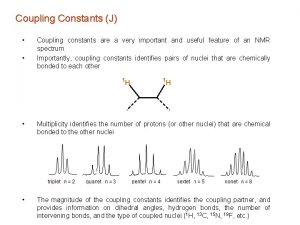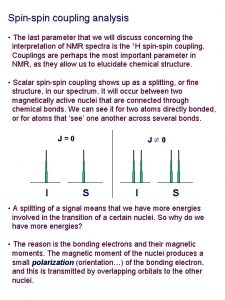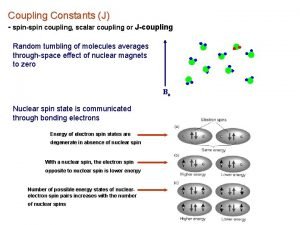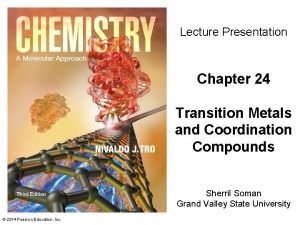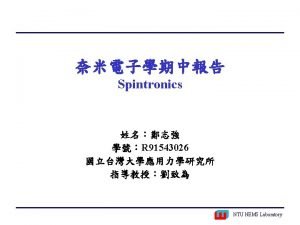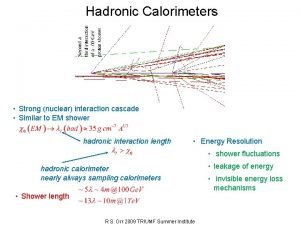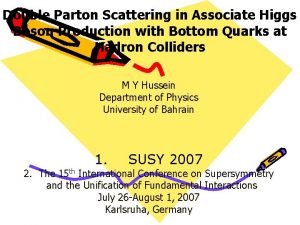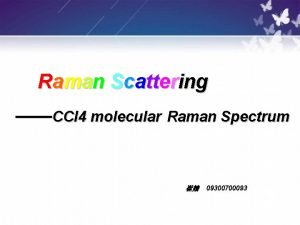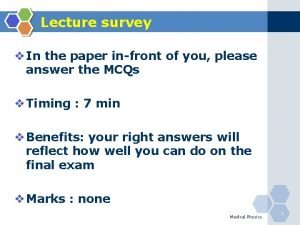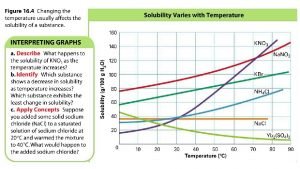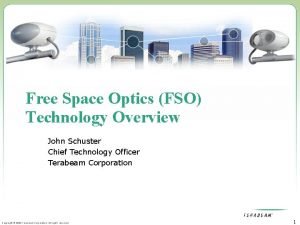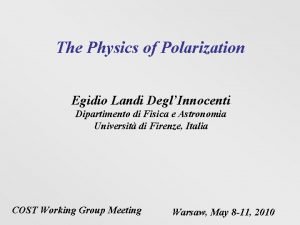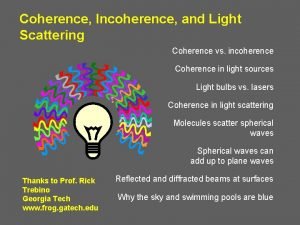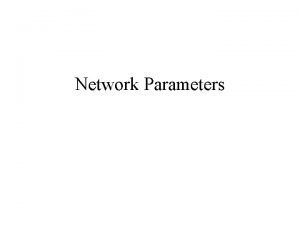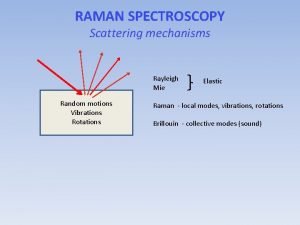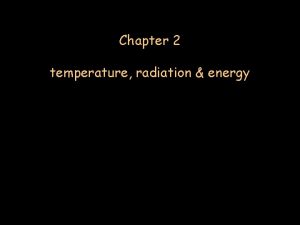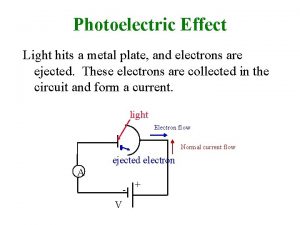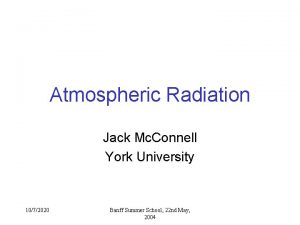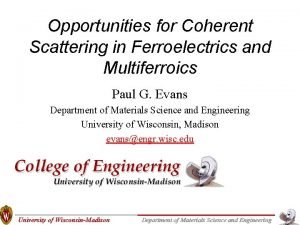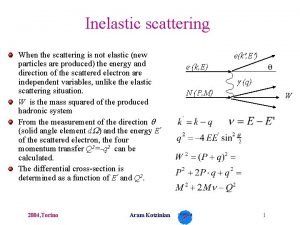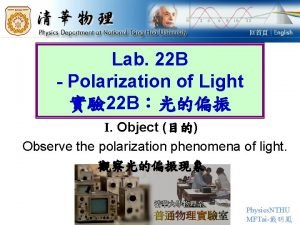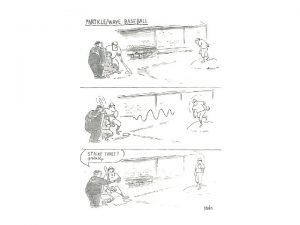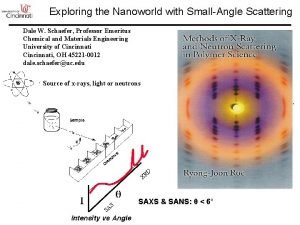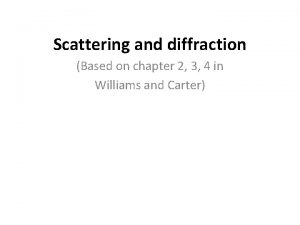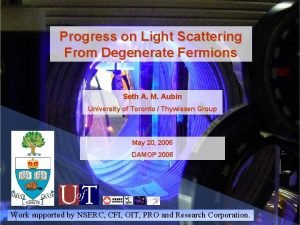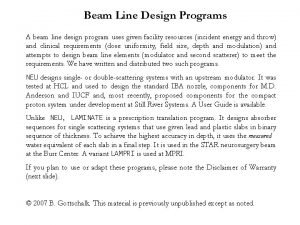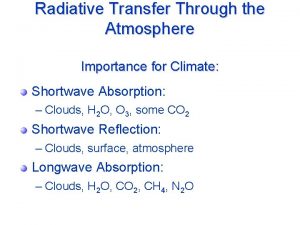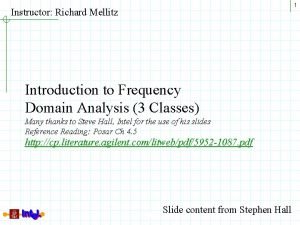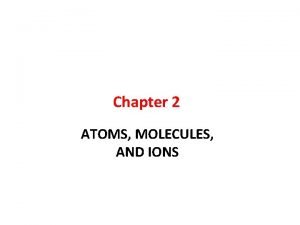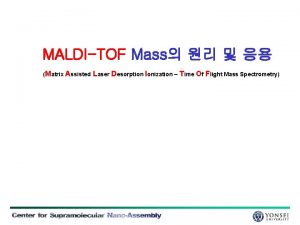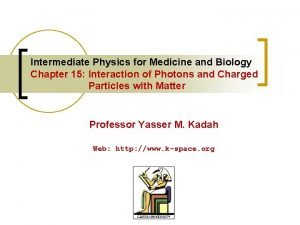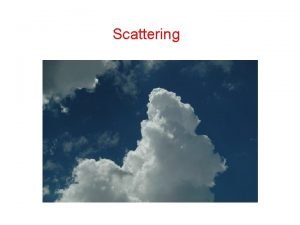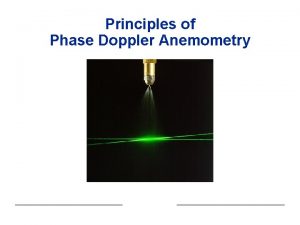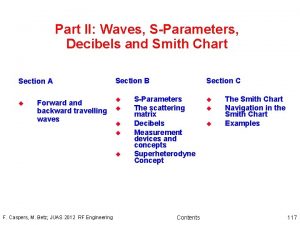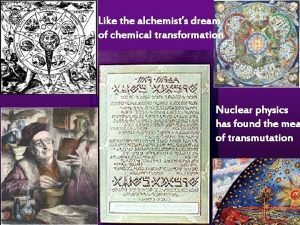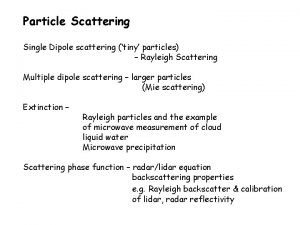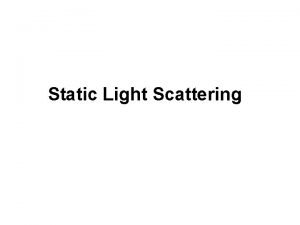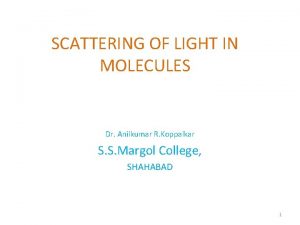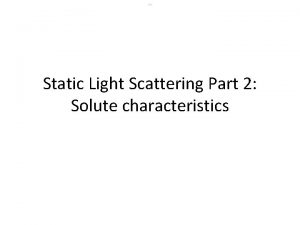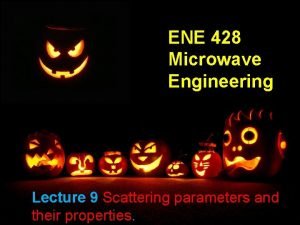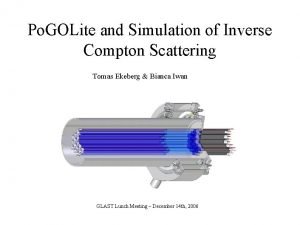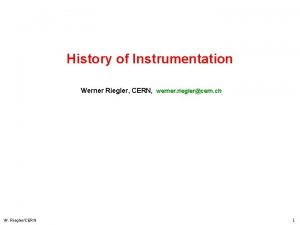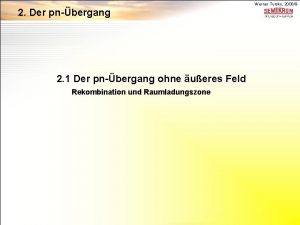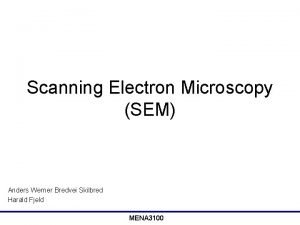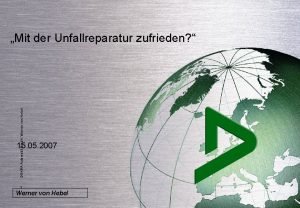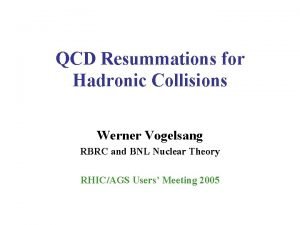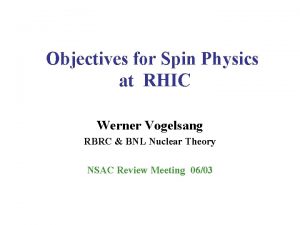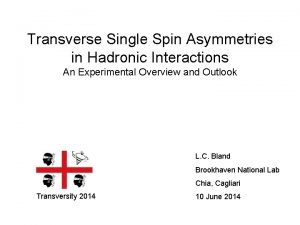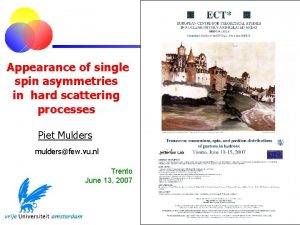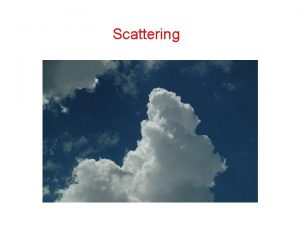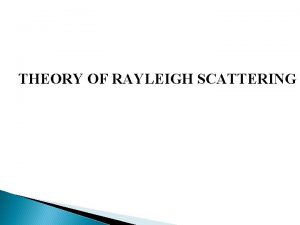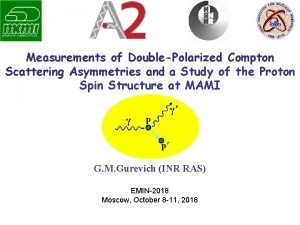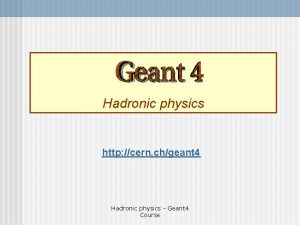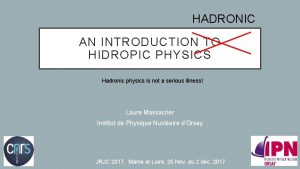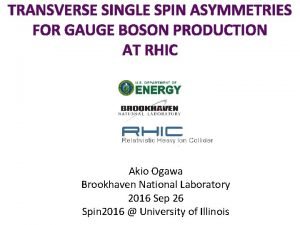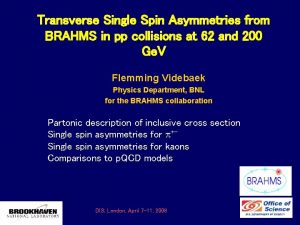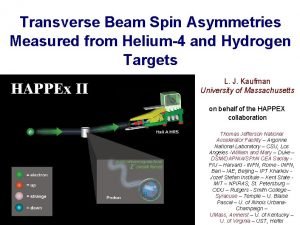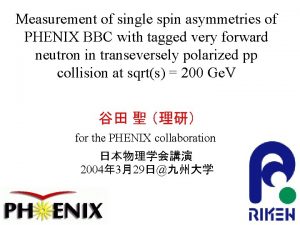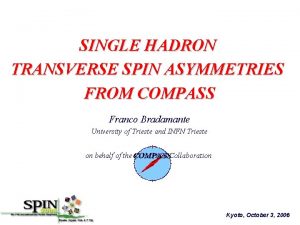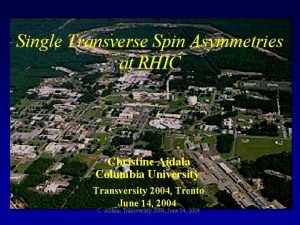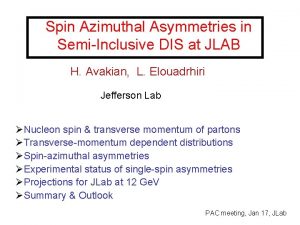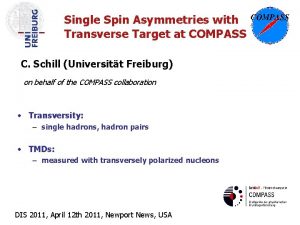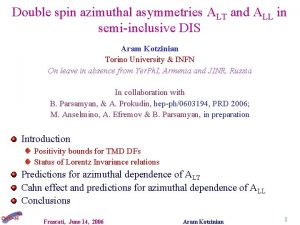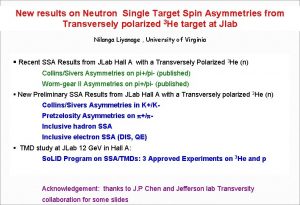SingleTransverse Spin Asymmetries in Hadronic Scattering Werner Vogelsang























































- Slides: 55

Single-Transverse Spin Asymmetries in Hadronic Scattering Werner Vogelsang (& Feng Yuan) BNL Nuclear Theory ECT, 06/13/2007

Mostly based on: X. Ji, J. W. Qiu, WV, F. Yuan, Phys. Rev. Lett. 97, 082002 (2006) Phys. Rev. D 73, 094017 (2006) Phys. Lett. B 638, 178 (2006) C. Kouvaris, J. W. Qiu, WV, F. Yuan, Phys. Rev. D 74, 114013 (2006) ( C. Bomhof, P. Mulders, WV, F. Yuan, Phys. Rev. D 75, 074019 (2007) ) J. W. Qiu, WV, F. Yuan, ar. Xiv: 0704. 1153 [hep-ph] (Phys. Lett. B, to appear) ar. Xiv: 0706. 1196 [hep-ph]

Outline: • Introduction • Single-spin asymmetries in pp h. X • How are mechanisms for Single-spin asymmetries related ? • Conclusions

I. Introduction

• SSA for single-inclusive process example: pp X a single large scale (p. T) L R power-suppressed collinear factorization (Efremov, Teryaev / Qiu, Sterman TF) • SSA with small & measured q. T , large scale Q examples: typical AN measured in lepton-scattering, “back-to-back” jets in pp need not be suppressed with 1/Q may have TMD factorization (Sivers & other fcts. )

II. Asymmetry in pp h. X

L R E 704 STAR

collinear factorization Brahms y=2. 95 STAR

STAR

• typically, hard-scattering calculations based on LO/NLO fail badly in describing the cross section √s=23. 3 Ge. V Apanasevich et al. Bourrely and Soffer Resummation of important higher-order corrections beyond NLO de Florian, WV

· higher-order corrections beyond NLO ? de Florian, WV “threshold” logarithms Real emission inhibited Only soft/collinear gluons allowed

Mellin moment in Leading logarithms · expect large enhancement ! de Florian, WV

de Florian, WV E 706

WA 70 Effects start to become visible at S=62 Ge. V… Rapidity dependence ? Spin dependence ?

• Kane, Pumplin, Repko ‘ 78 In helicity basis: ~ Im + + + _ _ transversity _ _ • lesson from this: AN in pp h X is power-suppressed !

• power-suppressed effects in QCD much richer than just mass terms (Efremov, Teryaev; Qiu, Sterman; Kanazawa, Koike) x 2 -x 1 _ x 1 x 2

• ingredients: Collinear factorization. x 1 x 2 -x 1 x 2 quark-gluon correlation function TF(x 1, x 2) provides helicity flip unpol. pdf Phase from imaginary part of propagator ~ i (x 1 -x 2) (soft-gluon-pole contributions)

• full structure: Qiu, Sterman Transversity Kanazawa, Koike



Position of pole may depend on k of initial partons IS FS

“derivative terms” • plus, non-derivative terms ! Qiu & Sterman argue: At forward x. F , collisions are asymmetric: large-x parton hits “small-x” parton TF (x, x) mostly probed at relatively large x

x. F=0. 15 x. F=0. 4

v Assumptions in Qiu & Sterman : • derivative terms only • valence TF only, • neglect gluon pion fragmentation In view of new data, would like to relax some of these. Kouvaris, Qiu, Yuan, WV

Remarkably simple answer: v Recently: proof by Koike & Tanaka

Ansatz: usual pdf Fit to E 704, STAR, BRAHMS for RHIC, use data with p. T>1 Ge. V § for E 704, choose p. T=1. 2 Ge. V allow normalization of theory to float (~0. 5)

Fit I: “two-flavor / valence” Fit II: allow sea as well

solid: Fit I, dashed: Fit II


Our TF functions:

p. T dependence

Dependence on RHIC c. m. s. energy:

III. How are the mechanisms for single-spin asymmetries related ?

• have two “mechanisms” • tied to factorization theorem that applies Q: In what way are mechanisms connected ? • Boer, Mulders, Pijlman • see interplay of mechanisms in a physical process ?

• consider Drell-Yan process at measured q. T and Q d /dq. T~Q coll. fact. TF q. T<<Q k. T fact. Sivers q. T QCD << q. T << Q same physics ? “Unification” / Consistency of formalisms • verify at 1 -loop X. Ji, J. W. Qiu, WV, F. Yuan

Step 1: calculate SSA for DY at q. T ~ Q use Qiu/Sterman formalism Because of Q 2 ≠ 0, there also “hard poles”: Propagator (H) has pole at xg 0 No derivative terms in hard-pole contributions.

soft-pole hard-pole

_ • result for qq process is (completely general!) soft-pole hard-pole derivative non-deriv. (recently also: Koike, Tanaka)

Step 2: expand this for q. T << Q Unpol. Pol.

Step 3: calculate various factors in TMD factorized formula Collins, Soper, Sterman Ji, Ma, Yuan At QCD << q. T can calculate each factor from one-gluon emission

Unpolarized pdf:

Sivers function: soft-pole w/ correct direction of gauge link hard-pole

soft-pole, deriv. soft-pole, non-deriv. hard-pole Precisely what’s needed to make factorization work and match on to the Qiu/Sterman result at small q ! So: Step 4: compare both results and find agreement !

Take a closer look: if one works directly in small q limit + ( + + + ) Here for soft-pole, but happens separately for: derivative / non-derivative / hard-pole

The interesting question now: What happens in more general QCD hard-scattering ? Consider pp jet X = jet pair transv. mom. Underlying this: all QCD 2 2 scattering processes

Example: qq’ • for Qiu/Sterman calculation: subset of diagrams IS FS 1 FS 2 (these are soft-pole)

Simplify: • assume q << P from the beginning • more precisely, assume k’ nearly parallel to hadron A or B and pick up leading behavior in q / P • reproduces above Drell-Yan results

k’ parallel to pol. hadron: (partly even on individual diagram level, as in Drell-Yan) Likewise for hard-pole contributions

What this means: When k’ nearly parallel to pol. hadron, structure at this order can be organized as

Some remarks: • highly non-trivial. Relies on a number of “miracles”: color structure no derivative terms when k’ parallel to hadron B … Calculation seems to “know” how to organize itself • happens for all partonic channels: individual diagrams

Some further remarks: • the obtained Sivers partonic hard parts are identical to the ones obtained by Amsterdam group • the obtained unpolarized partonic hard parts are identical to the standard 2 2 ones • complete calculation can be redone in context of Brodsky-Hwang-Schmidt model: identical results as from collinear-factorization approach



IV. Conclusions

• Single-inclusive case: use Qiu/Sterman formalism Non-derivative terms have simple form Not all aspects of data understood • Connection between mechanisms for single-spin asym. Drell-Yan as case study: q. T ~ Q Qiu/Sterman, matches TMD formalism for q. T<<Q Important input for phenomenology (Note: Sudakov logs) • The same happens for pp jet X 1 -loop results for q. T<<Q consistent with TMD factorization
 Realschule vogelsang
Realschule vogelsang Spin-spin coupling examples
Spin-spin coupling examples Spin spin coupling
Spin spin coupling J coupling constant
J coupling constant What is a low spin complex
What is a low spin complex Spin down
Spin down Hadronic
Hadronic Hadronic shower
Hadronic shower Double parton scattering
Double parton scattering Raman scattering definition
Raman scattering definition Equivalent dose formula
Equivalent dose formula Scattering of light in suspension
Scattering of light in suspension Back scattering
Back scattering Diffusione thomson
Diffusione thomson Scattering matrix
Scattering matrix Scattering of light
Scattering of light Scattering matrix
Scattering matrix Raman vs rayleigh scattering
Raman vs rayleigh scattering Light scattering
Light scattering Photoelectric effect graph explanation
Photoelectric effect graph explanation Scattering efficiency
Scattering efficiency Coherent scattering
Coherent scattering Non elastic scattering
Non elastic scattering Polarisation by scattering
Polarisation by scattering Scattering in central force field
Scattering in central force field Small angle scattering
Small angle scattering Diffraction and scattering
Diffraction and scattering Pauli blocking of light scattering in degenerate fermions
Pauli blocking of light scattering in degenerate fermions Double scattering
Double scattering Liquid crystal display
Liquid crystal display Coherent scattering
Coherent scattering Rayleigh scattering formula
Rayleigh scattering formula Scattering matrix
Scattering matrix Rutherford scattering
Rutherford scattering Dynamic light scattering 원리
Dynamic light scattering 원리 Compton scattering formula derivation
Compton scattering formula derivation It is the scattering of light
It is the scattering of light Medium energy ion scattering
Medium energy ion scattering Light scattering
Light scattering Scattering matrix
Scattering matrix Contoh refraksi gelombang
Contoh refraksi gelombang Scattering reaction
Scattering reaction Horizontal
Horizontal Zimm plot excel
Zimm plot excel Scattering of light
Scattering of light Rayleigh theory of light scattering
Rayleigh theory of light scattering Mie plot
Mie plot Scattering matrix of a reciprocal network is
Scattering matrix of a reciprocal network is Rayleigh scattering formula
Rayleigh scattering formula Scattering cross section in nuclear physics
Scattering cross section in nuclear physics Compton scattering
Compton scattering Golite trig 2
Golite trig 2 Werner riegler cern
Werner riegler cern Werner tursky
Werner tursky Anders werner
Anders werner Werner von hebel
Werner von hebel

